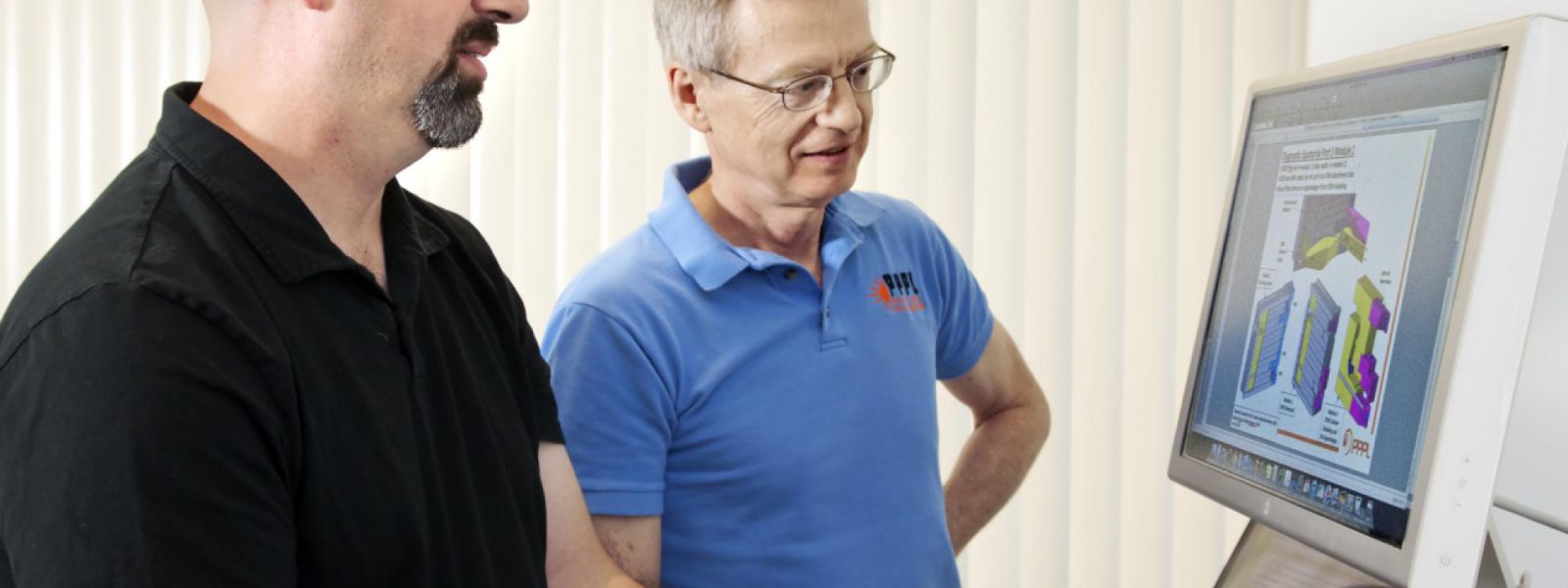When the ITER experimental fusion reactor begins operation in the 2020s, over 40 diagnostic tools will provide essential data to researchers seeking to understand plasma behavior and optimize fusion performance. But before the ITER tokamak is built, researchers need to determine an efficient way of fitting all of these tools into a limited number of shielded ports that will protect the delicate diagnostic hardware and other parts of the machine from neutron flux and intense heat. A port plug integration proposal developed with the US ITER diagnostics team has helped the international ITER collaboration arrive at a clever solution for safely housing all of the tokamak diagnostic devices.
“Before horizontal or vertical modules were proposed, diagnostic teams were not constrained to any particular design space. When we started working on this, we suggested that there be some type of modular approach,” said Russ Feder, a US ITER diagnostics contributor and Senior Mechanical Engineer at Princeton Plasma Physics Laboratory. “Originally, we proposed four horizontal drawers for each port plug. But then analysis of electromagnetic forces on these horizontal modules showed that forces were too high and the project switched to the three vertical modules.”
The proposal has been formalized by two ITER procurement agreements in late 2012 between US ITER, based at Oak Ridge National Laboratory, and the ITER Organization; other ITER partners are expected to make similar agreements this year.
“The work on the development of the diagnostic port integration solutions has been a true and good example of collaborative work with the different ITER partners. In particular, the work of the US is very much valued for their proactive and constructive approach to all the various developments.” said Michael Walsh, Head of the Diagnostics Division at the ITER Organization.

The plan changes the layout to vertical drawers, which are better able to withstand strong forces from the intense reactor environment. The design also integrates the drawer module with the diagnostic first wall, which is exposed to heat flux from the plasma. The current procurement agreements cover two upper and one equatorial port plug, along with the US diagnostics housed in these plugs.
“When ITER is operating, there are different magnetic fields, from the magnet systems and also from the plasma. Occasionally, there are disruptions or rapidly changing magnetic fields in the plasma. When that happens, there are very high forces set up in the port plug structures,” said Feder. Imagine you are pouring water from a pitcher on to a plate. If the plate is horizontal, all of the water―or energy―splashes on the plate, Feder explained. But if the plate is vertical, there is less splashing, and in the case of the diagnostic drawers, there is less exposure to strong magnetic forces.

The modular approach also helps with organizing the different diagnostic hardware, which will be produced by all of the ITER members—the United States, People’s Republic of China, European Union, India, Japan, Republic of Korea and the Russian Federation. The standard-sized drawers assist the ITER contributors in planning strategies for sharing diagnostic space. Feder observes that the adoption of this plan “really opened up discussions on optimizing diagnostic systems.”
David Johnson, team leader for US ITER diagnostics and principal research physicist at PPPL adds “this port integration solution is an example of the ITER partner domestic agencies working with the ITER Organization, being collaborative and sharing good ideas.”
That optimization is critical when diagnostics will be in the unforgiving ITER reactor environment, with plasma temperatures of over 100 million degrees C. “For all of the equatorial ports, the environment is extremely harsh. The very front part of the port plugs is pulled back from the plasma slightly, putting it in the shadow of the surrounding blankets. It’s a small move, but it makes a difference,” Feder said.
Another advantage of these separate modules is that it is possible to break the project down module (drawer) by module, instead of port plug by port plug. Because each port plug can hold several diagnostics, it is easier to reduce the number of interfaces between ITER contributors when diagnostics are completely within the real estate of a single module. Fewer standard interfaces simplify coordination among the ITER members.
The port plugs are hefty boxes made out of a specialized stainless steel, with the large equatorial port plugs over 11 feet long by 6 feet wide and weighing in at around 50 tons. The ITER tokamak will have a total of 25 diagnostic ports. Eight equatorial port plugs will use the modular vertical drawer design for diagnostics. Other port plugs will be used for heating, vacuum, fueling and blanket testing systems.
Media Contact: Lynne Degitz
